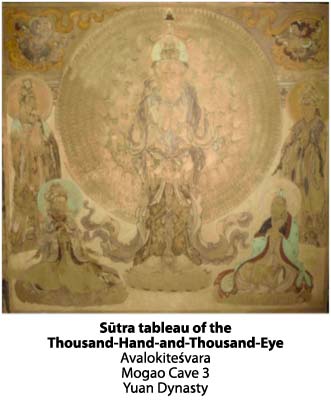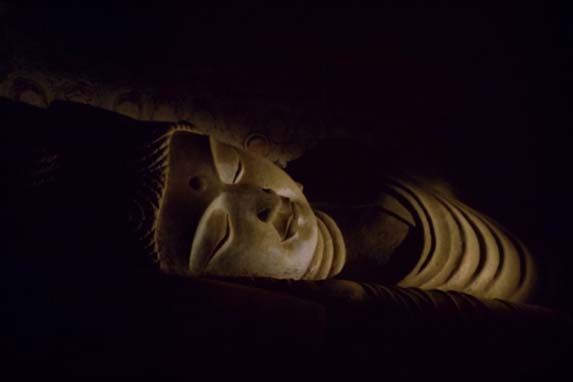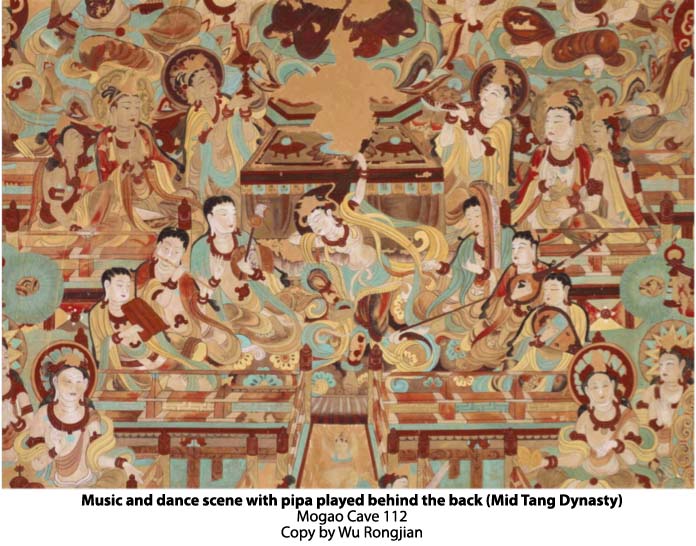Hong Kong Heritage Museum
Be sure to check out what the Hong Kong Heritage Museum has to offer: "The Magnificent Mogao," featuring magnificent masterpieces, which have been locked away for nearly 1000 years,as well as a special program of events called The Never-ending Dunhuang will be held regularly throughout the duration of the exhibition.
The Magnificent Mogao
 The Magoa caves, also known as the Caves of a Thousand Buddhas, are situated 25 km from the town of Dunhuang, in the Gansu province of western China, on the edge of the Gobi desert, so it is little wonder that many of us can only dream of visiting them. However, that dream is about to become a reality for those living in, or visiting Honk Kong, because from November 28th 2014 to March 16th 2015 the Hong Kong Heritage Museum will be exhibiting a number of pieces found in the caves. On display will be some of most wonderful examples of Buddhist art the world has ever seen including murals, paintings, sculptures and statues.
The Magoa caves, also known as the Caves of a Thousand Buddhas, are situated 25 km from the town of Dunhuang, in the Gansu province of western China, on the edge of the Gobi desert, so it is little wonder that many of us can only dream of visiting them. However, that dream is about to become a reality for those living in, or visiting Honk Kong, because from November 28th 2014 to March 16th 2015 the Hong Kong Heritage Museum will be exhibiting a number of pieces found in the caves. On display will be some of most wonderful examples of Buddhist art the world has ever seen including murals, paintings, sculptures and statues.
Members of the public will have the opportunity to experience these magnificent masterpieces, which have been locked away for nearly 1000 years. So whether you are interested in Buddhist art and ancient Chinese culture, or just simply want to see some amazing and truly beautiful pieces of history then The Hong Kong Jockey Club Series: Dunhuang - Untold Tales, Untold Riches Exhibition is not to be missed.
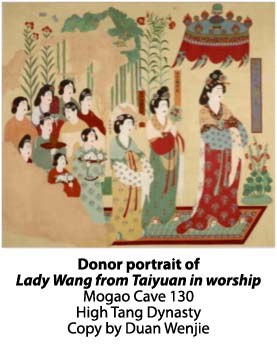 Dunhuang was established as a major trading outpost on the Silk Road during the Han Dynasty; around 111BC, and it is believed that the first caves were carved into the cliffs of the Dachuan River around 366AD as temples, so those travelling long distances could continue their religious ceremonies etc. By the seventh century there were more than a thousand beautifully decorated caves housing magnificent statues and paintings. The caves were discovered quite by accident in 1900 by Wang Yuanlu a Taoist priest. Realizing the significance of the find he made it his purpose in life to conserve what remained. Over the years thousands of pieces have been removed for the caves; some of which were sold by Yuanlu to raise money for the conservation work. Many of those pieces are now kept in the British Library.
Dunhuang was established as a major trading outpost on the Silk Road during the Han Dynasty; around 111BC, and it is believed that the first caves were carved into the cliffs of the Dachuan River around 366AD as temples, so those travelling long distances could continue their religious ceremonies etc. By the seventh century there were more than a thousand beautifully decorated caves housing magnificent statues and paintings. The caves were discovered quite by accident in 1900 by Wang Yuanlu a Taoist priest. Realizing the significance of the find he made it his purpose in life to conserve what remained. Over the years thousands of pieces have been removed for the caves; some of which were sold by Yuanlu to raise money for the conservation work. Many of those pieces are now kept in the British Library.
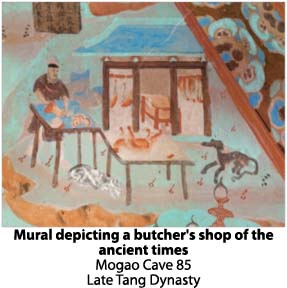 Declared a national monument in 1961 and listed as a World Heritage Site by UNESCO in 1987 the Magoa Caves house the world’s largest collection of Buddhist art. Currently there are more than 400 caves, many of which are open to the public; showcasing more than 50,000 square meters of murals and thousands of hand painted sculptures dating from between the 4th and the 14th century. In 1990 thousands of ancient manuscripts, paintings and relics spanning all the great dynasties were found in what is now called the Library Cave, which in terms of Oriental culture is man’s greatest ever discovery.
Declared a national monument in 1961 and listed as a World Heritage Site by UNESCO in 1987 the Magoa Caves house the world’s largest collection of Buddhist art. Currently there are more than 400 caves, many of which are open to the public; showcasing more than 50,000 square meters of murals and thousands of hand painted sculptures dating from between the 4th and the 14th century. In 1990 thousands of ancient manuscripts, paintings and relics spanning all the great dynasties were found in what is now called the Library Cave, which in terms of Oriental culture is man’s greatest ever discovery.
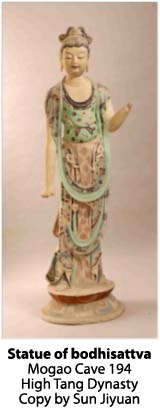 Visitors to the museum will get the opportunity to see many artefacts including Buddhist sutras written in Tibetan script; murals depicting scenes from activity on the Silk Road, and artists’ impressions of scenes from the Sui, Tang and Song Dynasty. The exhibition also charts the caves’ history, from an ancient ruin to being transformed into a modern tourist destination in the middle of a remote and desolate desert.
Visitors to the museum will get the opportunity to see many artefacts including Buddhist sutras written in Tibetan script; murals depicting scenes from activity on the Silk Road, and artists’ impressions of scenes from the Sui, Tang and Song Dynasty. The exhibition also charts the caves’ history, from an ancient ruin to being transformed into a modern tourist destination in the middle of a remote and desolate desert.
A special program of events called The Never-ending Dunhuang will be held regularly throughout the duration of the exhibition. For more information please contact the museum or visit their website at www.heritagemuseum.gov.hk. Here are a few of the events taking place during the exhibition.
Seminar on Dunhuang - Untold Tales, Untold Riches
Saturday the 29th of November 3:00 pm – 4:30 pm. Doors open at 2.15 pm.
Free admission.
Madam Fan Jinshi, the director of the Dunhuang Academy, which specializes in the preservation, management and study of Mogao Grottoes, will be giving a lecture on the wonderful treasures found in the caves. Madam Fan Jinshi has spent years managing and protecting the art found in the caves.
Flying Apsaras Dance over the City
Numerous dates from late December through to early March (see website for details).
Free admission.
Performed by the Hong Kong Dance Federation, this unique show is a blend of western and Chinese style Tang dances, inspired by the flying deities depicted on the murals in the caves. There will also be an accompanying commentary.
Appreciating Dunhuang
28 November 2014 – 31 December 2014. Wednesday to Monday 3:30 pm – 5:00 pm
Free admission.
This is a guided tour through the exhibition, with docents from the Dunhuang Academy giving detailed explanations about the architecture, murals sculptures and other feature and artefacts on display.
